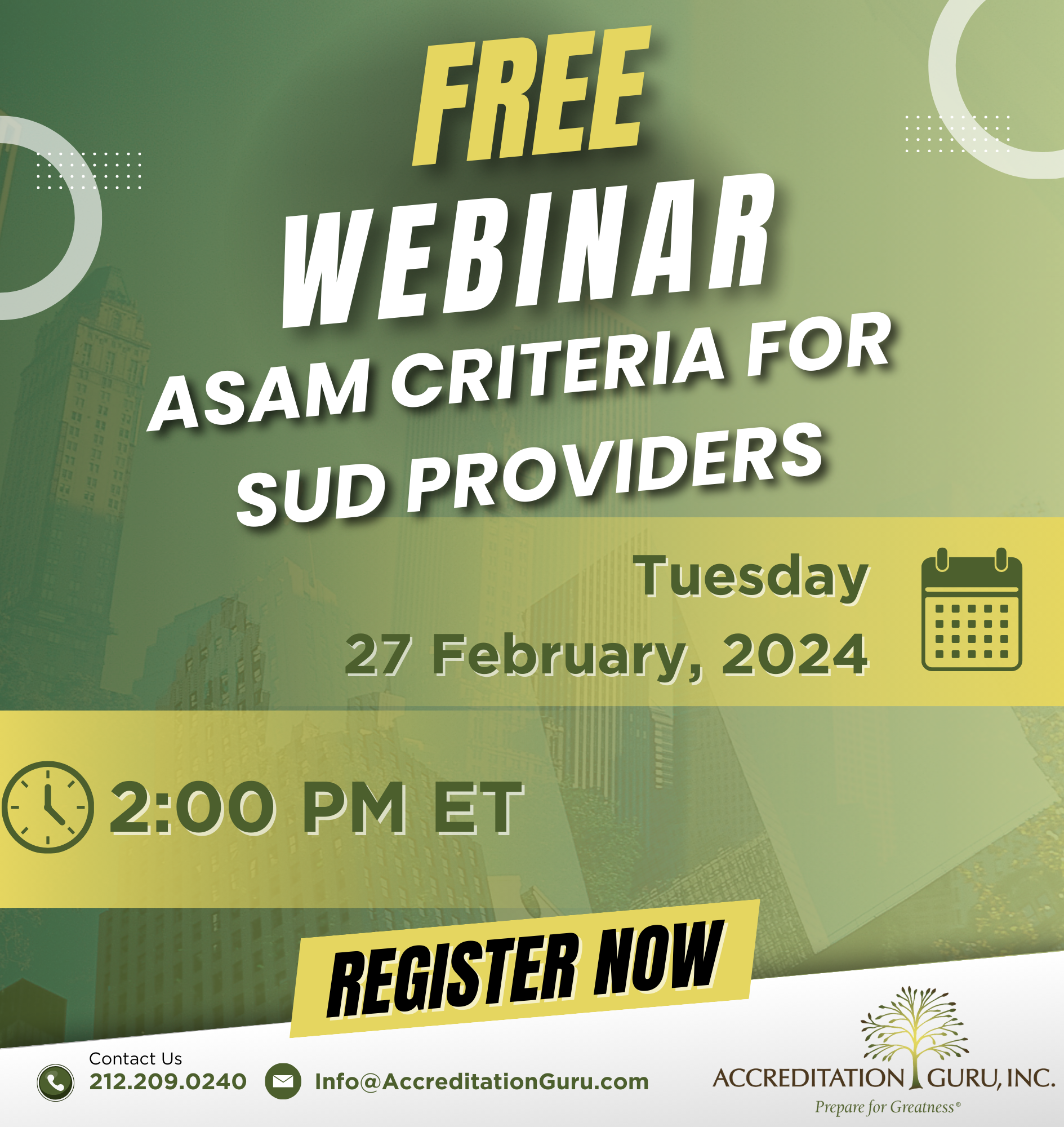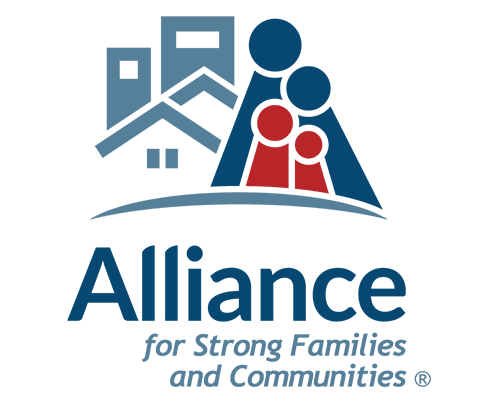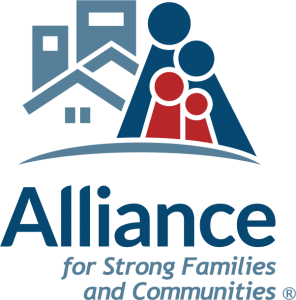Accreditation isn’t just a badge of honor—it’s a key factor influencing insurance coverage across industries. From healthcare to education, accreditation status can make a significant impact on the breadth of coverage and premiums insurers offer.
ASAM Criteria: Paving the Path to Recovery
In the ever-evolving landscape of addiction treatment, staying abreast of the latest advancements and guidelines is paramount to ensuring the highest quality of treatment. The American Society of Addiction Medicine (ASAM) stands at the forefront of this mission, providing comprehensive framework through its Criteria. This set of guidelines has become the gold standard in addiction medicine, shaping the way professionals approach assessment, treatment planning, and ongoing care.
The 6 Dimensions of Care
The ASAM’s Criteria is a dynamic and adaptable tool designed to assist healthcare professionals in providing personalized, patient-centered care for individuals struggling with addiction. The criteria encompass six dimensions, each crucial in capturing the complexity of addiction and guiding comprehensive treatment plans. In December of 2023, ASAM released its 4th Edition, which included updates to these six dimensions. They are:
- Intoxication, Withdrawal, and Addiction Medications
- Biomedical Conditions
- Psychiatric and Cognitive Conditions
- Substance Use-Related Risks
- Recovery Environment Interactions
- Person-Centered Consideration
These dimensions are used to determine which level of care is appropriate for each client. Recommendations for the level of care and treatment plans are crafted through comprehensive patient assessments, which take into account the patient’s biomedical, psychological, and social requirements.
ASAM’s Growing Popularity
The ascendancy of ASAM compliance in the realm of addiction treatment is not merely a passing trend but a paradigm shift that reflects a broader movement toward evidence-based, patient-centered care. As the prevalence of substance use disorders continues to rise, fueled by myriad social, economic, and environmental factors, the need for standardized, effective approaches to addiction treatment has never been more pressing. Against this backdrop, ASAM compliance offers a roadmap to guide both clinicians and patients towards the promise of recovery for several compelling reasons.
Standardization and Quality Assurance:
ASAM compliance establishes a standardized framework for assessing and treating individuals with substance use disorders. By adhering to these Criteria, treatment providers ensure consistency and quality across all aspects of care delivery, from assessment and diagnosis to treatment planning and discharge. This standardization promotes accountability and quality assurance, instilling confidence in patients, families, and referring professionals regarding the effectiveness and reliability of addiction treatment services.
Alignment with Evidence-Based Practices:
ASAM Criteria reflect the latest advancements in addiction medicine and behavioral healthcare. Compliance with their guidelines ensures that treatment providers are utilizing interventions and approaches that have been rigorously researched and validated for their effectiveness in addressing substance use disorders. This alignment with evidence-based practices enhances treatment outcomes and increases the likelihood of successful recovery.
Improved Communication and Collaboration:
When healthcare providers, treatment facilities, and other stakeholders involved in the continuum of care are following the same criteria, this fosters enhanced communication and collaboration. By utilizing a common language and framework for assessment and treatment planning, providers can more coordinate with one another across different levels and settings. This interdisciplinary collaboration ensures that individuals receive comprehensive, holistic care that addresses their unique needs and promotes long-term recovery.
Regulatory Requirements and Accreditation Standards:
Many regulatory agencies and accrediting bodies require compliance with ASAM Criteria as part of their licensing and accreditation standards for addiction treatment facilities. Meeting these requirements demonstrates a commitment to maintaining high standards of care and adherence to best practices in addiction treatment. Compliance with ASAM guidelines can also help treatment facilities navigate the regulatory landscape more effectively and avoid potential legal and financial risks associated with non-compliance.
Enhanced Patient-Centered Care:
These Criteria prioritize a patient-centered approach to addiction treatment, focusing on the individual’s unique needs, strengths, and preferences. By conducting comprehensive assessments and tailoring treatment plans to meet the specific needs of each patient, treatment providers can deliver more personalized and effective care that resonates with the individual’s goals and values. This patient-centered approach fosters greater engagement, empowerment, and satisfaction among those who seek treatment for substance use disorders.
When a treatment facility embraces the standardized framework of ASAM Criteria, they are offered a multitude of benefits. Their outcomes are improved, treatment plans are enhanced, the allocation of resources is optimized, and the decision-making of their patients becomes empowered. This is not merely a set of rules and regulations, but a path that holds transformative potential for the lives of individuals and communities affected by addiction. It represents a convergence of best practices, regulatory standards, and patient-centered principles that pave the way towards interdisciplinary cooperation and mutual support. By aligning with ASAM’s guidelines, treatment providers can enhance the quality, effectiveness, and accessibility of addiction treatment services, ultimately improving outcomes and promoting recovery for their clients.
If you and your organization are looking to come into alignment with ASAM’s Criteria, we can help! Accreditation Guru offers assistance by providing crosswalks of your policies and procedures to ASAM, reviewing clinical records for accurate documentation of ASAM Criteria clinical processes, and more. Click here to schedule a free Zoom consultation with us so we can further discuss your unique needs.
ASAM Criteria for SUD Providers
Dive into the intricacies of the American Society of Addiction Medicine (ASAM) Criteria on Substance Use Disorder (SUD) treatment in our focused webinar designed for healthcare administrators and professionals, counselors, and therapists. This course offers a comprehensive exploration of advanced strategies crucial in elevating SUD care and treatment efficacy.
Discussions will include the Multi-dimensional Biopsychosocial Assessment, emphasizing the interplay between biological, psychological, and social factors in SUD and a segment on Person-centered, Individualized Treatment Planning. Determining your program(s) ASAM Level of Care (LOC) Placement is critical for all SUD treatment providers, and we will explore ASAM criteria for accurately assessing LOC and matching patient needs with appropriate services, as well as Multi-dimensional Discharge/Transfer Planning strategies.
Mention will be made of the importance of ASAM alignment for Medicaid and commercial insurances reimbursement.
Additionally, you will gain insights into CARF or Joint Commission Accreditation for SUD Providers, including navigating the accreditation process and maintaining compliance. Finally, we’ll explore the significance of ASAM LOC Certification by CARF in enhancing service delivery and treatment efficacy. Highlights will also be given to identify changes to the ASAM Criteria Dimension in the new Forth Edition.
Get Accredited Without Breaking the Bank
Human service organizations play a crucial role in meeting the needs of vulnerable populations, and it is essential that they are well-manage and effective in their operations. One way that organizations can demonstrate their commitment to quality is by becoming nationally accredited. However, the costs associated with accreditation can be a barrier for some organizations, especially those with limited resources.
While the costs of accreditation can be significant, it is important to remember that accreditation can lead to significant organizational improvements. Accreditation helps organizations to identify areas for improvement, implement best practices, and enhance their service delivery. These improvements can translate into better outcomes for clients and greater organization efficiency, which can help to offset the costs of accreditation over time.
Read on for tips on how a human service organization may approach the costs associated with becoming nationally accredited.
Direct vs. Indirect Costs
It is important to analyze the annual costs associated with accreditation and determine whether they are feasible for the organization. This analysis should include both direct costs (such as application fees and onsite survey expenses) and indirect costs (staff time spent on accreditation-related tasks or improvements to facilities, for example). By understanding the costs associated with accreditation, organizations can develop a realistic budget and plan accordingly.
TIP: When comparing fees from different accrediting bodies, they can vary widely based on your organization’s size, breadth of programs, number of locations, budget, etc. When you have an estimate of fees from an accrediting body (AB) for your entity, it helps to divide by three if that AB has a 3-year cycle (such as CARF International or The Joint Commission) or divide by four for a 4-year cycle (COA Accreditation, for example) to better directly compare total fees.
New Program Development & Expansion
New program development / expansion may come about as a decision while conducting strategic planning, assessing needs of defined service population, staffing needs, and accessibility of services. These decisions may require additional staffing, resources, and facilities improvements, which can add to the overall cost of accreditation. However, these investments can also help organizations to better serve their communities, enhance their long-term sustainability, and ultimately lead to higher revenue.
TIP: Be sure that your leadership and board of directors have accurate and complete data to make informed decisions. It may seem like this does not need to be said, but sometimes organizations want to paint a rosy picture of how things are going. Be honest, make hard decisions when needed, and be sure that you are serving the current needs of your defined service population.
Improved Operational Efficiencies
Accreditation helps an organization use its resources more efficiently and can result in cost savings. Accreditation requirements for clear and detailed written procedures based on well thought out policies can enhance staff performance, improve outcomes, and lead to better communication with, and satisfaction for, the clients. These efficiencies can help retain staff, strengthen relationships with funding and referral sources, and aid in compliance with state or federal regulatory bodies.
TIP: States recognize the positive impact of accreditation and many offer regulatory relief from licensing / certification requirements. Check with your state licensing or certification representative for recognitions of accreditation.
Liability Insurance
Accredited service providers may be eligible for considerations on their insurance policies. The reason is that insurance carriers understand achieving accreditation leads to more robust risk management and risk mitigation efforts, a focus on health and safety, corporate compliance, and ethical business practices. This can lead to lower liability insurance costs over time, which can help offset the initial costs of accreditation.
There is a reason that the first question after the demographics (name, address) on an insurance policy application is “Licensure and Accreditations.”
TIP: You will need to inquire about considerations related to accreditation. If your broker is, for some reason, not familiar with the many benefits of national accreditation, they should be educated on it (feel free to share this article).
Grant Opportunities
Two notes about grants. First, some foundations use accreditation as a qualifier to apply for a grant, while others may use accreditation as an internal selection criteria without formally stating it as a requirement. Why? Because foundations and other funders understand the benefits and importance of earning and maintaining accreditation.
Second, there are grant opportunities out there that can help offset the costs associated with accreditation. While you may not see grants specific to accreditation, many grants will cover some aspects of accreditation and / or fund ways to improve your service programs. The following are examples of areas addressed under accreditation, and a grant related to such can be earmarked to help defray costs:
- Technology and equipment improvements
- Strategic planning
- Quality management programs
- Capacity building
- Board development
TIP: The National Council of Nonprofits has a listing of grant research tools, including a listing of state associations of nonprofits, which provides links to state-specific grant databases and member discounts on grant research tools. https://www.councilofnonprofits.org/running-nonprofit/fundraising-and-resource-development/grant-research-tools. Also, Candid (formerly the Foundation Center) helps nonprofits find funders to support their work through their Foundation Directory (fee-based). https://candid.org
Facilities and Office Space
In some cases, organizations may need to make improvements to their facilities or office space in order to meet accreditation standards. This may require additional funding, which should be factored into the organization’s budget and fundraising plans.
TIP: Have someone other than the Facilities Manager do a walk-through of all residential and operational facilities to review against accreditation standards early on in the process. The “fresh eyes” approach can be very helpful, whether this is conducted by a staff member or an outside consultant.
Ensure Board & Leadership Buy-in
Finally, it is crucial to ensure that the organization’s board and leadership are fully committed to the accreditation process. This includes not only providing the necessary financial resources but also actively participating in the accreditation process and ensuring that the organization meets all of the necessary standards and requirements. Board and leadership buy-in are critical to the success of accreditation, and without this support, the accreditation process may be difficult to achieve or sustain.
Keep in mind, just because you do have board and leadership buy-in does not guarantee an easy road to accreditation, but if you do NOT have this buy-in, you are fairly definite to have problems along the way.
TIP: Meet with the leadership team and board of directors when first considering accreditation to discuss the benefits, accrediting body or bodies being considered, outline the timeline and process, review costs and allow them to ask questions, all with an eye toward building the all-important buy-in.
In conclusion, the decision to pursue accreditation is a significant one for any human service organization. While the costs of accreditation can be significant, they must be weighed against the benefits of improved service delivery, reduced liability risks, and increased organizational efficiency. By carefully considering the costs and benefits of accreditation, organizations can make an informed decision about whether accreditation is the right choice for them and ensure their long-term sustainability and success.
For more information or questions about the contents of this article, please write Peggy Lavin @ peggy@accreditationguru.com. This post contains original content and was written for Accreditation Guru, Inc. Use of this copy is permitted with credit and reference within the same body of copy to Accreditation Guru, Inc.
How Accreditation Supports Mergers and Acquisitions
Since 2018, there has been significant merger and acquisition activity in the behavioral healthcare field, but why? Individuals are becoming more aware of healthcare issues; there is less stigma about seeking help for mental health struggles; and more effective treatments are now available. This has created increased demand for and use of mental health and addiction treatment services, as well as channeling more funding towards meeting the demand and growing need. Not only this, but as individuals, including professionals, gain understanding of the link between mental and physical wellbeing, more integration of physical and behavioral health care is occurring. So, where does accreditation come in?
There are a number of accrediting bodies that work to ensure providers of substance use disorder treatment and mental health services meet specific, nationally accepted standards, including The Joint Commission, CARF International, Council on Accreditation (a service of Social Current) and others.
Accreditation requirements (standards of safety and quality of care) center around three main areas: documentation, facilities, and people. Documentation standards focus on written plans; polices and procedures; clinical records; and personnel files. For people, standards address not only the care of the persons served, but also those that provide it. Facility standards ensure that the physical environment where care is being provided is safe, healthy, and therapeutic for everyone within. All these standards create stability within an organization, which is a favorable factor in M&A activity.
Achieving accreditation also gives a behavioral health organization a framework for growth and management of their internal resources. It helps to standardize clinical processes and documentation and provides an external validation of the quality of services provided. Accredited organizations will often see increased efficiencies from improved practice consistency, tightened administrative practices, and an increased emphasis on risk management. Because of accreditation requirements, organizations will inevitably have a broader view and a more detailed approach to risk mitigation and risk management than they’re doing on their own.
For an investor looking to acquire a service provider, seeing that a facility is accredited can provide peace of mind. Accreditation indicates that an organization has gone through the work to create a strategic plan, comply with legal and regulatory requirements, and has implemented quality monitoring practices. All of which assist with due diligence, both on the administrative and clinical sides. Investors can also be assured that the facility’s finances are well managed, as accreditation speaks to sound financial management practices. There are even a number of reports that say accreditation reduces staff turnover, which can save an organization money and maintain a high-quality workforce.
Another part of due diligence is examination of litigation and claims history of an organization. Have there been any lawsuits filed or any pending? What is the frequency and severity of claims? Are there identifiable patterns and trends? What steps were taken to reduce the chance of reoccurrence? Accreditation supports this type of investigation by helping to maintain a positive history by proactive identification of risk and finding ways to mitigate or eliminate it where possible. Secondly, it encourages a performance improvement process that requires collection and analysis of key data and then taking action for improvement. Additionally, accreditation promotes a safe and healthy physical environment with requirements for emergency and disaster planning.
If your organization is going through a merger or considering accreditation, you are not alone! Accreditation Guru operates nationwide and provides a number of services to guide you through the process, such as:
- Individual accreditation consultation
- Mock surveys
- Development of accreditation-compliant plans and policies
- Risk assessment
- Strategic planning facilitation
- And more…
If you would like to have a conversation, please feel free to contact us via our website or schedule a free Zoom consultation with one of our experts.
For more information or questions about the contents of this article, please write Peggy Lavin @ peggy@accreditationguru.com. This post contains original content and was written for Accreditation Guru, Inc. Use of this copy is permitted with credit and reference within the same body of copy to Accreditation Guru, Inc.
Accreditation – A Bedrock of Risk Management
When insurance companies are considering coverage for an organization, they are generally looking for those that can demonstrate high performance in risk prevention, safety, quality, outcomes, and qualified and competent staff. Accreditation standards often drive good practices in these same areas, particularly with risk management and performance improvement. Thus, the accreditation status of an organization can be indicative of the frequency and severity of costly claims.
Dan Rains, CSP, ARM, Risk Control Manager for Berkley Human Services, offers insight, “Accreditation speaks volumes about the quality of an organization. It demonstrates commitment to a continuous improvement culture with data-driven quality assurance processes and visionary leadership. These are all things that are important from an underwriting perspective which can have long term impact on losses and total cost of risk.”
Sean Conaboy, MSW, MPA, Insurance advisor with NSM Insurance Brokers, Behavioral Healthcare/Human Services Practice provides additional insight. “Insurance companies are interested in how an organization mitigates its risks, and one sound mitigation strategy is national accreditation. That’s why the first questions on an insurance application are regarding both licensure and type of accreditation.”
Accreditation as a Risk Reduction Strategy
By shifting an organization from a reactive stance after an adverse event to an ongoing proactive risk management approach, accreditation can become the bedrock for effective risk control and mitigation. The standards and survey process of accreditation guides an organization in a process of identifying and assessing actual and potential risks as well as implementing activities to prevent occurrence and to reduce severity should there be an occurrence. Connaboy agrees, “When an applicant for insurance notes that they are accredited by a national accrediting body, the underwriter reviewing the application can assume that the organization has a strong infrastructure based on sound risk control activities and practices. At the end of the day, insurance companies want to know how well-run an organization is – and being accredited provides the framework for a well-run organization.”
Additionally, legal conformance and regulatory compliance are universal, risk-reducing requirements of all accrediting bodies. Accrediting organizations also encourage and assist organizations to go beyond what is regulated and strive for a higher level of quality and safety through a continuous improvement process that incorporates monitoring the effectiveness of risk reduction activities as well as outcomes achieved.
Risk Exposures and Controls
Risk exposures and controls are addressed in a variety of ways during the accreditation process, notably in standards and in areas addressed during the onsite survey. Below are some examples of the high-risk exposure areas and controls that may be used to mitigate the exposure.
Risk: Transporting Clients/Persons Served
Control Examples:
- Criteria for authorizing drivers
- Use of vehicle telematics
- Appropriate safety restraints and adequate passenger supervision
Risk: Abuse/Molestation
Control Examples:
- Zero-tolerance policies/Culture of safety
- Criminal background and reference checks
- Mandated reporting policy/procedures
Risk: Cyber Attack
Control Examples:
- Initial and periodic staff training on cybersecurity
- Policies and procedures addressing staff use of computers and passwords (remote access)
- Software protection of information
- Updating computers and backup/recovery procedures
Risk: Lack of Qualified/Competent Staff
Control Examples:
- Policies and procedures for verification of credentials
- Oversight and supervision of staff
- Staff training
- Written job descriptions linking duties/responsibilities to qualifications/competencies
Effective risk controls also include emergency response preparedness. An accredited agency is usually required to have a written disaster plan including, if applicable, evacuation and relocation of staff and clients, as well as specific plans to meet the needs of individuals with disabilities and other special needs during emergencies. The organization must also address coordination with governmental authorities and emergency responders.
Accreditation and the Risk Management Model
The standard risk management model includes identification, analysis, evaluation, and mitigation of risk. Accreditation can help organizations to identify risks they perhaps have not thought about, such as requiring a possible potential disaster be used in an emergency management plan. Requirements to conduct a risk assessment help organizations analyze and evaluate risks to determine how severe or costly they might be and can help identify risk controls to mitigate the risk. Additionally, accreditation helps organizations to reduce or mitigate risk through standard compliance in key areas, such as safety standards, fire code compliance, IT data management, human resources policies, emergency planning, and more.
How Can Accreditation Guru Help?
Although reducing risks is common with accreditation, there are differences in the risk management/risk reduction requirements between the accrediting bodies. Please feel free to contact us to learn more about the differences in risk management standards across the national accrediting bodies.
In addition to helping organizations achieve their accreditation goals, Accreditation Guru’s consulting team is also available to assess your organization’s risk management/risk reduction processes. Our service includes a holistic, systemic assessment of your risk management process or an assessment of one or more specific critical risk exposures.
For more information or questions about the contents of this article, please write or call Jennifer Flowers @ Jennifer@AccreditationGuru.com / 212.209.0240. This post contains original content and was written for Accreditation Guru, Inc. Use of this copy is permitted with credit and reference within the same body of copy to Accreditation Guru, Inc.
The Alliance’s New “Operations Support Services”
As a partner of the Alliance for Strong Families and Communities, Accreditation Guru is excited to share with you their new and game-changing “Operations Support Services” offering for the nonprofit sector. This offering is intended to help leaders address provision of operations support services related to human resources, finance, administrative operations, and more. This is available to ALL nonprofits in the United States, not just Alliance member organizations.
Across the country, daily tasks, ranging from detailed budget reports to regular donor stewardship, siphon limited energy and resources that could be better directed toward program implementation. Because dollars available for overhead functions are particularly scarce, nonprofits should look for smart ways to maximize these resources. For organizations that cannot cost-effectively sustain internal capacity and expertise in administrative functions, the gap will continually widen and plague their abilities to focus and execute on their missions.
The Alliance is dedicated to helping community-based organizations (CBOs) bolster their approach to risk management, improve the effectiveness of fund usage, and understand the benefit of shared services—all of which allow for an increased focus on mission and people served. The “Operations Support Services” offering was created to help fulfill the five identified “North Star” initiatives in the landmark report, “A National Imperative: Joining Forces to Strengthen Human Services in America,” by the Alliance for Strong Families and Communities and the American Public Human Services Association.
By partnering with the Alliance, CBOs can outsource various financial and administrative duties for which internal capacity and resources may be limited. As part of this new venture, the Alliance also is offering competitive and robust benefits packages, enhanced retirement planning services, and comprehensive EAP and work-life services to their employees at a reasonable cost, regardless of their size. In addition, the Alliance’s unemployment tax program combats hidden expenses, avoids claims volatility, and enables better management of cash flow and claim tracking.
The Alliance has established many strategic partnerships to facilitate provision of operations support services that can be customized for any size nonprofit:
- Flexible accounting and bookkeeping assistance delivered directly by Alliance staff
- Comprehensive, competitively priced group health insurance packages offered via industry
leaders that cover thousands of companies and hundreds of thousands of lives - Employee assistance and work-life services from FEI Behavioral Health, the Alliance’s
social enterprise - The ability to provide a wide range of retirement plans and planning services to employees,
with the added value of no administrative fees - A cost-effective alternative to the state unemployment tax system
- Access to group purchasing savings programs
“Along with our expertise in human resources, finance, and administrative operations, it is our intent to enhance and expand our support services to help leaders address needs related to fundraising and development; marketing, public relations, and communications; and information technology,” explains Lenore Schell, Alliance senior vice president of strategic business innovation.
For more information, visit the Alliance’s website.
Why Your Organization Needs Hired & Non-Owned Auto Insurance

Hired & non-owned auto insurance is a highly misunderstood coverage and as a result, often gets put at the bottom of the insurance coverage priority list. Hired and non-owned auto insurance provides coverage for bodily injury and property damage losses caused by vehicles you don’t own, vehicles you lease, hire, rent, and/or borrow, but are used for business operations.
For this discussion, we are going to focus on coverage for vehicles not owned by your organization but used for your operations. Typically, these vehicles are personally owned by employees and volunteers—in other words, non-owned auto.
Organizations that don’t own company vehicles, may automatically think they don’t need auto insurance. Nothing could be further from the truth! If you have employees or volunteers that drive their own vehicles on behalf of your organization, for any reason, then you can become responsible for auto claims. Situations, where your organization may be responsible for damages, can include (but is not limited to):
• Using their own vehicle to go to meetings
• Using their own vehicle to go to the bank, the post office, or other errands
• Using their own vehicle to provide the services offered by your organization
If there’s an accident in any of these circumstances, then your organization can be held responsible and sued for damages. Auto liability claims can have a significant impact on your bottom line. Hired and non-owned auto liability coverage can help absorb potential financial losses and protect your business.
What is Hired & Non-Owned Auto Insurance?
Hired & Non-Owned Auto Liability Coverage is for vehicles owned by employees or volunteers and covers injuries to other people and damage to other people’s property. This is coverage in addition to the coverage an employee or volunteer may already have on their vehicle. It does not cover damage to the vehicles owned by your employees or volunteers, only liability.
In the event your organization is in any way responsible for an accident, a driver’s own auto insurance will be responsible for any claims. However, if the claims are more than the liability coverage limits that the individual has on their personal auto policy, then your non-owned auto insurance could kick in to pay the remainder of the claim. In other words, the employee or volunteer auto insurance triggers first.
Example
The Executive Director of an organization was driving to the bank in their own vehicle to drop off some paperwork for a business loan. She was in a hurry and sped through a yellow light. A car turned in front of her and she hit the driver’s side of the oncoming vehicle. This collision resulted in considerable damage to both vehicles and severe injuries to the other driver.
The injured driver sued the Executive Director and the organization for the damage to his vehicle and his injuries. Because the Executive Director was driving for business, the organization would be responsible for the damages caused by the accident. The total claim was $450,000 including the associated legal fees.
The payments were as follows:
• The Executive Director’s personal auto policy paid up to her limit of $300,000
• The organizations non-owned auto policy paid the remaining $150,000
• The annual premium cost of the non-owned auto Insurance was $350
Auto claims are by far the most frequent type of claim we see, and auto claims involving injury can be quite large. All organizations have some type of driving associated with their mission and general operations. If an organization is deemed in any way responsible for an auto accident, even a small claim can quickly eat up the organization’s reserves and as we’ve seen, a small expenditure for the coverage more than compensates for the potential risks.
Make sure that you include non-owned auto insurance as part of your organization’s risk management arsenal.
~TJ Armstrong, Business Development Manager, Hawley & Associates, LLC








